On Friday, I returned to Lawsonia for the first time in three years with an assist from GCAer and plus-handicap photographer Dan Moore.
I began playing the course back in 2009. At that time, the bulk of Ron Forse's renovation work had been done and the course had begun to reclaim some acclaim. At the time, it immediately became my favorite of any course I had played. A few courses have passed it since, but it has always held a special place in my golfing history and my fondness for it partly explains why I joined a Langford and Moreau club a few years later. Nevertheless, it always felt like the course had some unrealized potential. Primarily, I found it to be a bit limited by frequently too-slow playing surfaces and a back nine that never seemed to match the character of an extraordinary front side.
It doesn't appear that the last three years have seen dramatic changes at the course. Quite a few trees have been cut down and one or two original bunkers reclaimed, but most of the work could have been completed in a week or so by a good maintenance staff. And yet, the difference is dramatic.
Much of the discussion of the tree clearing has focused on the 14th hole. After seeing it in person, I must agree that the 14th is a better hole today without the trees surrounding its corridor than it was three years ago when tucked in an enclave of pines. And yet, the tree removal around the 14th hole has had a far more significant effect on holes like 10 and 13, which are dramatically better today. From the 10th green, one can see the 14th running just below and it gives a feeling of intimacy and drama to the routing that wasn't there previously, while also giving a really cool viewing angle of the engineering of the 14th green itself. 13, which might be my favorite par 5 in the world, has also been drastically improved with better sight lines from the tee and the reclamation of the original fronting bunker, which I took the opportunity to play from when my approach ballooned into the steady 25+ mph wind and left a plugged lie some 10 feet below the putting surface.
10 in 2010:
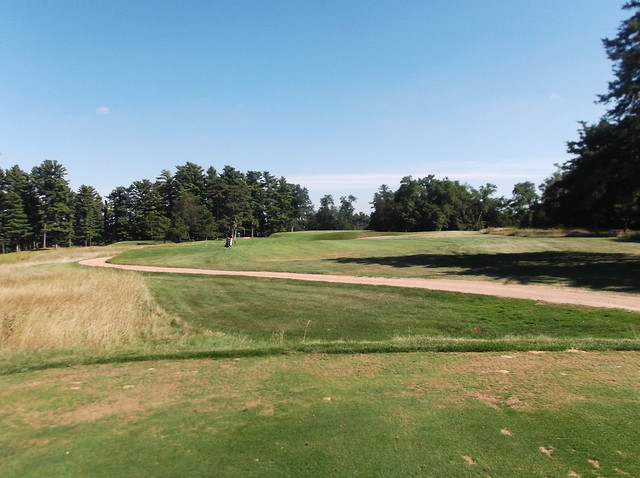
10 in 2014:
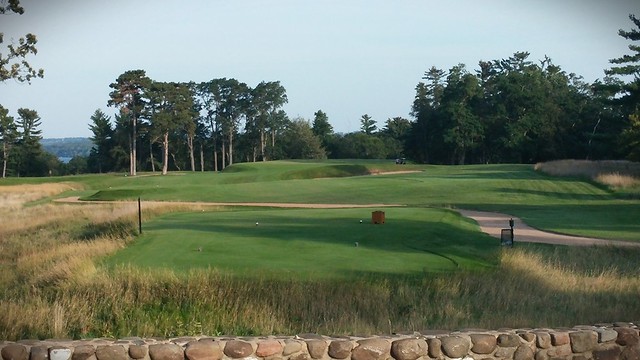
13 tee in 2010:
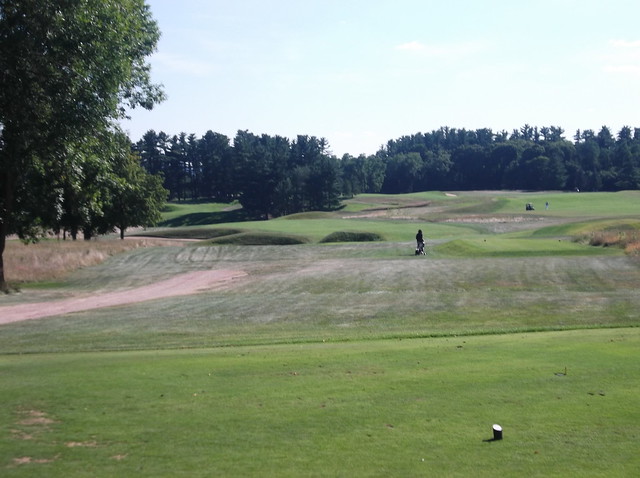
13 tee in 2014:
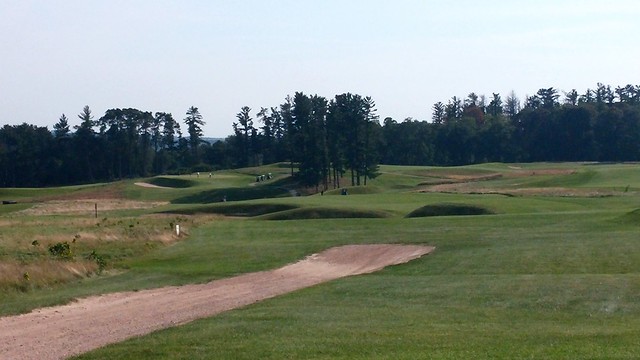
13 from ~200 yards out in 2010:
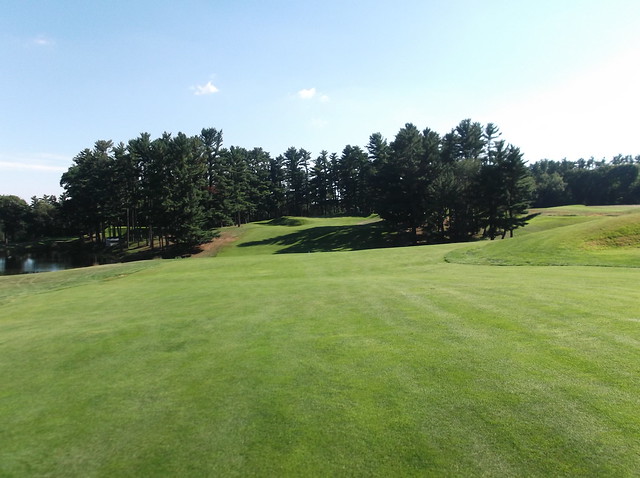
13 approach in 2014:

Lawsonia is no longer a well-kept secret. The staff, finally, seems to recognize how special the Links course is. Golfers are following suit. The guys I played with were from Madison and discussed other courses they play regularly almost apologetically, as though they know that places like Hawks Landing and University Ridge are slums by comparison. The conditioning also finally reflects the principles of the Links course. It played faster and firmer than any bentgrass course I've played before, and even the recently top-dressed greens were firm enough to send wedge shots bouncing through. Coupled with sustained winds approaching 30 mph, and Lawsonia last Friday was hitting a gear that it never came close to in my previous half-dozen rounds there.
One thing that stood out was the course's ability to engage all types of players. I had a Jekyll and Hyde round. I was 12-over on the front nine with a driver that I couldn't control in the wind, and yet, the course was playable even if I couldn't score. On the back side, I started to hit the ball very well with birdies at 10, 11, and 15. I thought I might break par for the back nine until we turned back into the wind on 17 and I closed with a pair of double-bogeys. Yet, even with my game peaking as I hit 5 of the first 7 greens on the back, the toll that the course takes for imprecision was on full display. A near-perfect approach at 13 came up just short and left an impossible up and down. Hitting 11 in two still left a severely difficult two-putt, as did hitting the back portion of the green on 14. Simply put, the course's intrinsic balance, ability to challenge strong players while accommodating weak ones, and its greatly improved conditioning and aesthetics have made it arguably the best public course in Wisconsin today. The fact that its ranking in Golfweek has fallen over the last three years is an embarrassment.